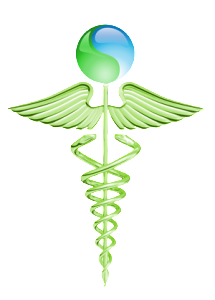
While “rolfing” may sound a lot like something you do after you’ve had way too much to drink – hopefully aiming for the toilet – the term actually refers to a form of soft tissue manipulation to bring about both emotional and physical relief.
Rolfing is based on the idea that we humans are out of alignment with Earth’s gravity, and that manipulating parts of the body to bring us in better alignment can have amazing benefits, including making us stand straighter, be taller and move better.
Also known as structural manipulation, Rolfing is a specialized type of massage therapy that, ideally, works over a series of sessions taken over time. Rolfers, as they are known, use their hands, elbows and fingers to manipulate the soft tissue in our bodies, and by doing so bring about relief from a variety of complaints.
In the process, Rolfers claim they can alleviate years of discomfort and chronic pain and stress, releasing tension as they seek to realign our bodies with the Earth’s gravitational field. In fact, they claim to improve our posture so much that you can actually see a visible difference in before and after pictures. Now that’s saying something!
Rolfing in a Nutshell
Originated by Dr Ida P. Rolf (no, really), the practice first surfaced in the 1950s and has been popular ever since, although it really entered the popular mainstream in the 1970s. In a nutshell, it was developed in answer to the question she posed herself: “What conditions must be fulfilled in order for the human body-structure to be organized and integrated in gravity so that the whole person can function in the most optimal and economical way?”
Rolfing, therefore, is based on the idea that we humans are out of alignment with Earth’s gravity, and that manipulating parts of the body to bring us in better alignment can have amazing benefits, including making us stand straighter, be taller and move better.
Dr Rolf theorized that the connective tissue, or fascia, can restrict muscles from working well together, especially after emotional or physical distress. A trained biochemist who became a physical therapist, she believed that separating the tissues manually can have far-reaching results.
This is done by a qualified “rolfer” over a period of ten sessions lasting from 75 to 90 minutes, who begins with the feet and makes his or her way over the entire body to free the fascia get rid of the unhealthy binding of tissues, therefore helping muscles and bones to return to their balanced states. The Rolfer will also help you become aware of inhibiting movement patterns, and teach you how to change them.
How Do You Rolf?
Rolfing is easy. You see a qualified Rolfer, you pay the money, you get Rolfed. While ten sessions is the recommended number for a classic Rolf, many Rolfers will see you for less.
Most Rolfers start by taking a “before” picture of their client, then having them fill out a questionnaire. Then they ask them to strip down to their underwear and lie on a cushioned table. Later they may be asked to sit or stand.
Then the Rolfers get to work in what can be described as something akin to a deep tissue massage, but different. Some clients may feel a sensation of slight pain or burning, while the tissue areas are being “released”. This, in theory, is entirely normal and shows that the technique is working.
Each Rolfing session is different, and each one will concentrate on something different. “One individual may experience his losing fight with gravity as a sharp pain in the back, another as the unflattering contour of his body, another as constant fatigue, and yet another as an unrelenting threatening environment,” Dr Rolf said.
“Those over 40 may call it old age; yet all these signals may be pointing to a single problem so prominent in their own structures and the structures of others that it has been ignored: they are off-balance; they are all at war with gravity.”
After the sessions are completed, people who have been well and truly Rolfed are reported to feel an incredible sense of lightness, overall well-being and freedom in the areas that have been worked on by the Rolfer, as well as experience better movement, coordination, improved breathing etc.
What Can Rolfing Help?
Unlike chiropractors, Rolfers believe more than just the spine must be in alignment. And, correspondingly, they believe that once this happens emotional well-being will follow.
Rolfers are trained to deal with a myriad of complaints, including:
* Carpal Tunnel Syndrome
* Curvature of the spine
* Back problems
* TMJ pain
* Neck problems
* Headaches
* Sciatica
* Feet problems
* Visceral restrictions
* Chronic pain
* Chronic stress
* Arthritis
* Athletic performance
Rolfers also believe that the connective tissue in our bodies can maintain a memory of previous injury or trauma, and keep that memory alive within our bodies. Even if our bodies seemingly heal completely from these injuries, there is a rigidity in our bodies that remains.
Rolfing gets rid of that rigidity – and as the body has adjusted itself to accompany it, it helps the body go back to its original state, before the injury ever happened.
You Judge
While many people are die-hard Rolfers, others think Dr Rolf was a quack and that her Rolf Institute for Structural Integration (which is based in Boulder, Colorado and reportedly charges students around $10,000 for a training course that can last up to two years) is a complete waste of time. Only people who have studied at the Institute are certifiable Rolfers – about 1,550 individuals worldwide.
Ida Rolf died age 83 in 1979. But Rolfing lives on. As she put it, “This is the gospel of Rolfing. When the body gets working appropriately, the force of gravity can flow through. Then, spontaneously, the body heals itself.”
While skeptics have said that there is no medical evidence to back up whether or not Rolfing really works, and whether her claims are bunk or not, there was widespread coverage to an international Fascia Research Congress in held in 2007, and the technique has, if anything, become even more popular since its inception.
But is Rolfing just another type of deep tissue massage, or is it more than that – something magical and mystical that can align us body and soul? You be the judge.
Long live Rolfing! Long live Ida Rolf!

Source by S Matthews
 Vitamin Agent The Health & Naturalistic Source
Vitamin Agent The Health & Naturalistic Source



